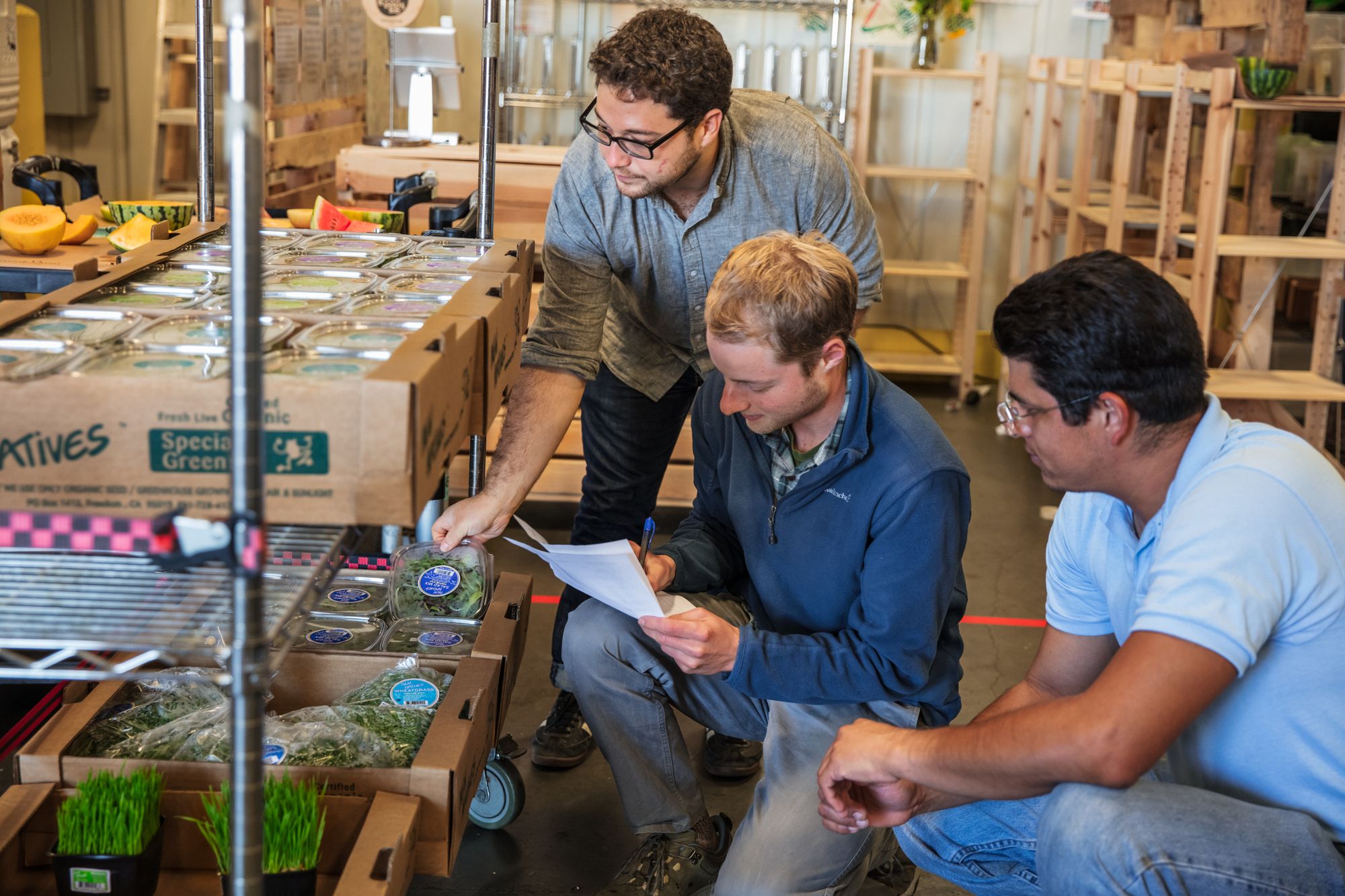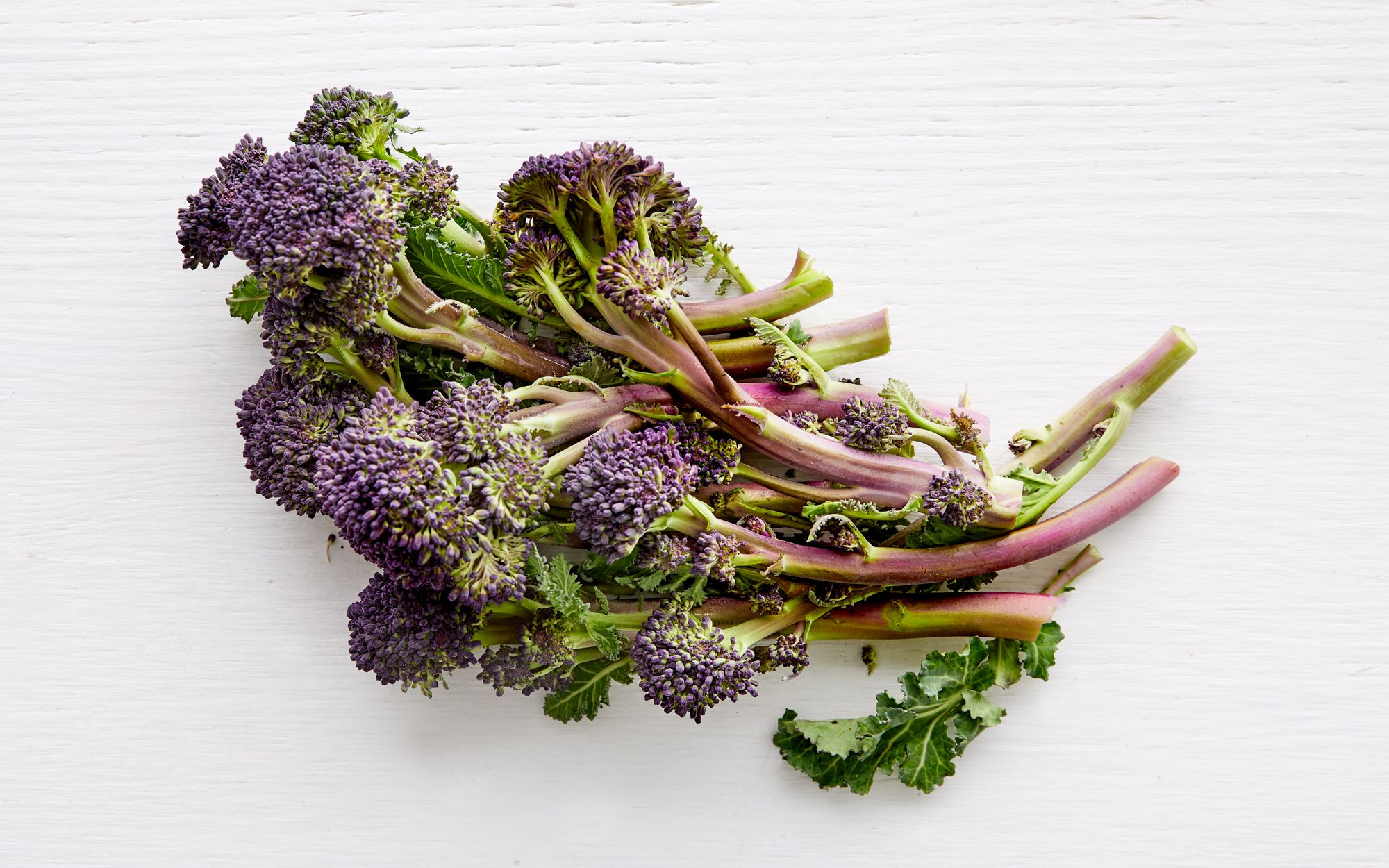Buying from small farms and producers not only gives you access to the best quality products but also offers the satisfaction of knowing exactly what – and whom – your dollars are supporting. That’s why chefs like NOPA’s Laurence Jossel visit five farmers’ markets a week to buy whole tables of apples, and why consumers sign up for CSA boxes from their favorite farms.
As a business, however, the logistics of working with small farms pose challenges: limited inventory, inconsistent product, not to mention keeping up with hundreds of text messages and paper invoices. Restaurants and grocery stores serving customers in volume often lack the resources required to buy directly from farms. Good Eggs wants to solve that puzzle.
Good Eggs launched in 2011 allowing customers to shop online for produce from local farms and delivering grocery bags to their doorsteps. Since then, the company has expanded beyond produce to a wider and more complete assortment, including prepared foods and Meal Kits, and been working hard to perfect the grocery delivery model. We asked Ben Hartman, who leads produce sourcing for the team, all about how Good Eggs scales “local” for the masses – and what other big purchasers can learn from their success. Here are ways to maximize the partnership for both buyers and sellers.
How Good Eggs Sources from Small Farms at Scale
Commit to Volume
Good Eggs makes a standing commitment to purchase a minimum quantity of product from some growers over the course of a season. After experimenting with the model for the first time last year, the team is now eager to do more – and farmers are equally enthusiastic.
“There are certain items where we’ve identified one or two growers and we know the quality is going to be excellent,” says Hartman. “They grow the item in some volume that makes sense for our business and for theirs, and we want to make sure we have access to that amazing product coming from that farm.”
Standing weekly commitments give farms the security to know that if they plant more strawberries one season, they will be able to sell them at an agreed-upon price. Those guarantees allow economies of scale: Farmers can make deliveries twice as large as they were last time around, but because it’s still one drop, costs remain relatively flat. On the flip side, buyers can ask for a better price by committing up front.
Hartman hopes that Good Eggs can be an avenue through which small farms sell extra product, and that ultimately, both farm and grocery businesses can scale together. He’s worked with Live Earth Farm in Watsonville, for example, to think deliberately about how the farmers can increase production in a way that makes sense for them. Live Earth has streamlined operations to grow fewer items overall, and some in bulk, so that their production aligns with what Good Eggs can sell.

Prioritize Long-Term Sustainability
Initially Good Eggs sourced product intuitively, guided by a sense of what high-quality, sustainable food meant to them. Then a couple of years ago, the team came together to define sourcing criteria they could stand behind. Organic practices are just the baseline; transparency, chemical exposure, and fair labor practices round out the list.
“We really want to be working with growers who are able to provide year-round employment for their farm employees,” Hartman explains. “We recognize that farm labor contracting is a necessary part of a lot of people’s businesses, especially those who grow seasonally, but as much as possible, that’s something we focus on.”
Good Eggs works with Full Belly Farm in California’s Capay Valley, which runs a year-round program so they can provide their employees with more consistent work. In the winter, they expand their floral program to include dried flowers to keep revenue coming in.
“We really want to be working with growers who are able to provide year-round employment for their farm employees.”
Nurture Healthy Businesses
Sustainability applies not just to farms, but also to the buyer-seller relationship between Good Eggs and their vendors. Good Eggs often has to balance a quest for efficiency with prioritizing the long-term health of their partners. For example, Hartman says that for the health of a grower’s business, Good Eggs never wants to be their sole buyer. That may mean juggling three different berry growers instead of consolidating purchasing, which translates to more back and forth on the phone. It’s more work, but better business practice.
Also, Hartman encourages farmers to sell directly to consumers at farmers’ markets and through CSAs so they can get retail dollar for their products, maximize revenue, and connect directly with end consumers. (This is especially important for small farmers, who aren’t yet in a position to grow larger volumes more efficiently. Larger growers may eventually outpace those sales avenues, which have a limited capacity and come with substantial overhead and labor costs.)
“When we identify a grower who has amazing product, part of me wants to say, ‘I want all of it,’” he admits. “At the same time, it’s important for any small business to have that diverse revenue stream. If anything happens to our ability to continue buying the same item at the same price – that’s not something I want one of our partners to have that 100% reliance on us. That’s a risk for them.”
How Farms Make Large-Scale “Local” Possible
Focus on Fewer, Better Things
When it comes to choosing farmers to work with, quality trumps everything for Good Eggs – price, convenience, even appearance. For many farms, specializing in fewer items makes it easier to perfect the ingredients they really want to invest in. It makes sense especially for small businesses, who may struggle with the labor and resources required to manage dozens of products at once.
“There are certain efficiencies that come with just saying, there are five items we know we grow super well, and we can grow others on the side in smaller quantities,” says Hartman. “But we need to know that we have a buyer who is committed to that volume.”
For a grower, it is important to balance specialization with diversification. Biological diversity and crop rotation encourages soil health and more nutritious, delicious produce. It makes it possible to have year-round labor with more variation and supports direct-to consumer relationships through CSA programs and farmers markets.
Specialization is efficient on the buyer side, too. Purchasing from one supplier who handles a few different commodities helps cut down on costs, including time spent communicating with multiple producers.
Communicate Quickly and Often
Many of Good Eggs’ growers harvest fruits and vegetables to order, so if their yield estimates are off, everyone loses out: Good Eggs and farmers on sales, and customers on product. Rapid communication in the quick-moving world of grocery is crucial so that Hartman’s team has a chance to fill in the gaps with alternative producers. That goes for defects, too – the sooner the buyer knows about any issues, the sooner they can address it.
Product rejection is a necessary part of any buyer’s receiving process. Good Eggs is more permissive about many of the aesthetic issues that other grocery buyers would reject, but it is important to maintain quality standards. Good Eggs has developed processes to avoid having to deal with a quality issue at the dock helping growers minimize loss:
“A lot of folks have cell phones out in the field and can shoot us a text with a picture of what they’re seeing, and give us an estimate of how many units might be affected,” Hartman says. “We can make the call. If we’re not able to buy it, the grower has a heads up so they can work on another sales opportunity.”
Prioritize Flavor First
When Hartman evaluates a new farm, he looks for features that differentiate their products from others on the market. Flavor is always the first and most important consideration. “The product needs to taste amazing and be something that we can stand behind – that we can be proud of selling to our customers.”
Interesting or unique crops that no one else is growing are another major selling point, since Good Eggs can only sell so many Early Girl tomatoes. This year, Hartman was crazy about purple sprouting broccoli, which he calls “the new kale” and praises for its color and flavor (Instagram fans have caught on with a #psb hashtag). Syrupy sweet Candystick delicata squash are a new favorite, too.

As an online retailer, Good Eggs has more flexibility than a brick-and-mortar store in terms of produce aesthetics. Their customers are accustomed to funky sizes and shapes.
“We tend to care less about some of the grading specs, whether sizing, color, or blush – the cosmetic side,” Hartman says. Typical product standards may specify minimums for red or pink blush on certain varieties of apples, for example, but Good Eggs looks primarily for optimal flavor.
The Good Eggs ripeness needs fall somewhere in between a traditional grocery store and a farmers’ market. Because produce comes straight from farms, they don’t need a tomato to last 14 days. On the other hand, because they are delivering products to customers, careful packing and handling is crucial to avoid bruising. “We pride ourselves on being able to handle and deliver products that generally can’t be handled in much longer supply chains that don’t take as much care,” Hartman says.

 Olivia Terenzio
Olivia Terenzio